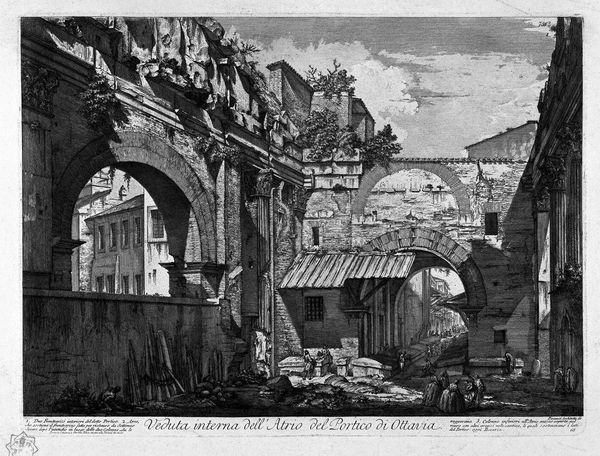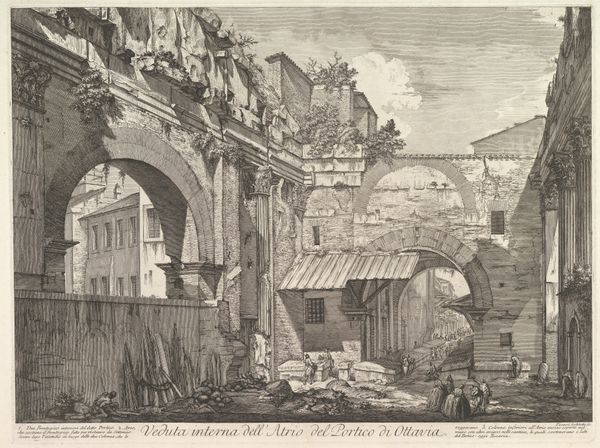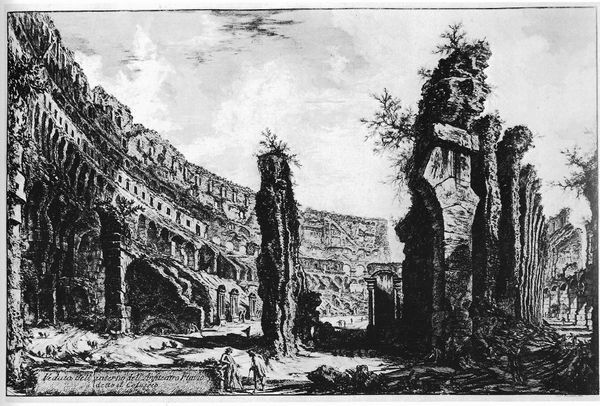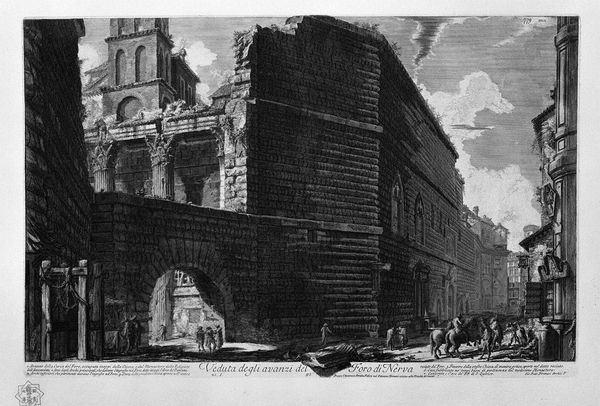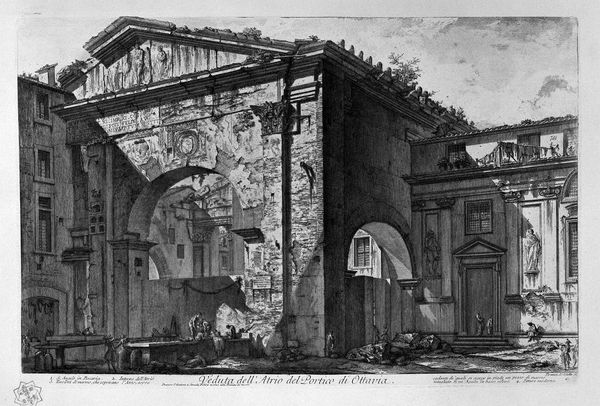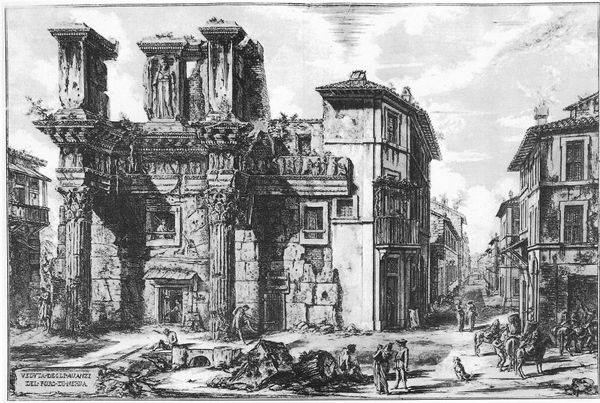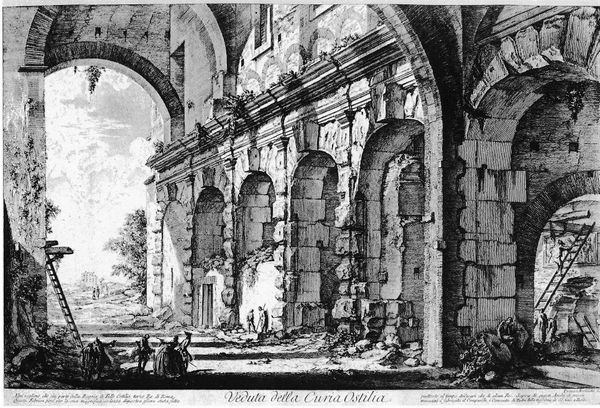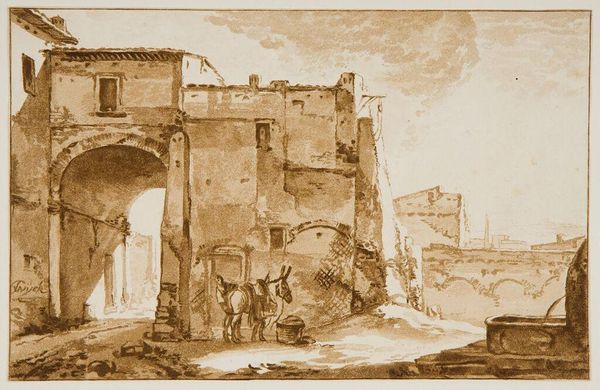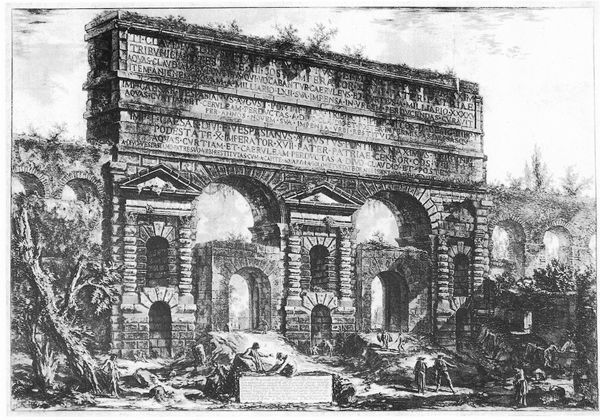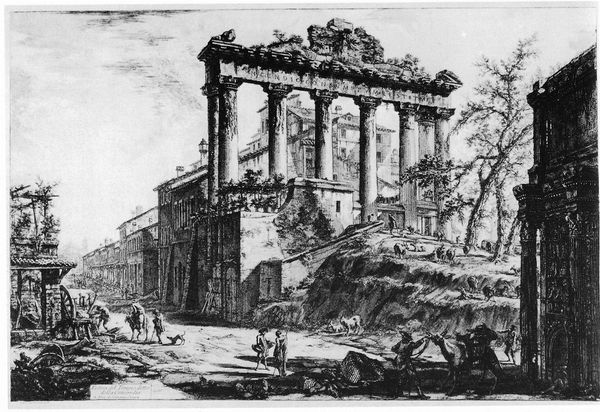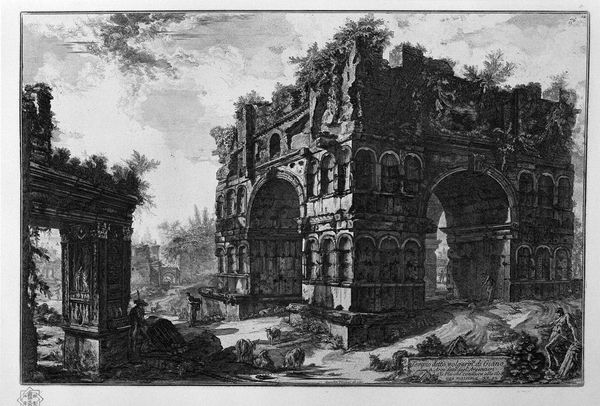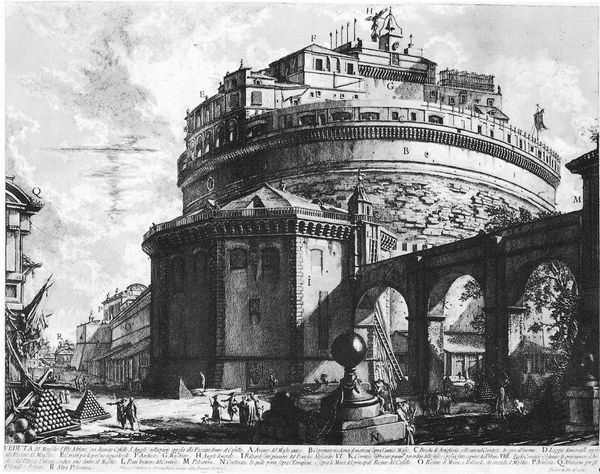
print, etching, architecture
#
neoclacissism
# print
#
etching
#
landscape
#
holy-places
#
romanesque
#
arch
#
architecture
Copyright: Public domain
Curator: Before us is Giovanni Battista Piranesi's "Veduta dell'Atrio del Portico di Ottavia," an etching capturing a view of the Portico of Octavia in Rome. Editor: My immediate impression is one of melancholic grandeur. There's something so poignant about these decaying arches juxtaposed with the tiny figures inhabiting the space. The high contrast only reinforces a somber and reflective mood. Curator: Indeed. What interests me is the narrative Piranesi crafts. We're not just looking at architectural ruins, but at the remnants of power, structures deeply implicated in Roman social life, now inhabited and repurposed by the everyday. This evokes the transition and adaptation of cultural spaces. Editor: Absolutely, the arches and columns speak to Roman imperial ambition, while the crumbling walls point to the inevitable decay of earthly power. But tell me, isn't there more to these decaying objects than what time and history imply? It makes me think of Ozymandias! Curator: Very insightful. You see that same concept reflected here. Consider, too, the role of Neoclassicism during this time, where a renewed interest in classical forms often ignored or romanticized the true socio-political complexity of the ancient world. Piranesi doesn't shy away from showing its complex present. Editor: The layers of history seem almost physically present, in these crumbling archways. Do you see something archetypical at work with this scene? Perhaps Piranesi, through his use of light and shade and the specific motifs of arches and fragmented forms, is engaging with some more profound psychology around ruins, like an index of humanity’s ephemeral status? Curator: I think you've hit upon something important there. This scene asks us to consider the cyclical nature of power and how monuments transform. Even the smallest details – figures amidst the debris, vegetation reclaiming stone – create a picture about power’s ability to shift over time. Editor: Looking at the visual symbolism of arches, the eye can be led away or even inward. As with "holy-places" imagery more generally, Piranesi creates a sense of awe. Curator: What started as an architectural study becomes a potent visual statement. Thank you for taking me along for the journey. Editor: Likewise, our chat added further historical and artistic nuance, making me see how powerful symbols affect us!
Comments
No comments
Be the first to comment and join the conversation on the ultimate creative platform.
